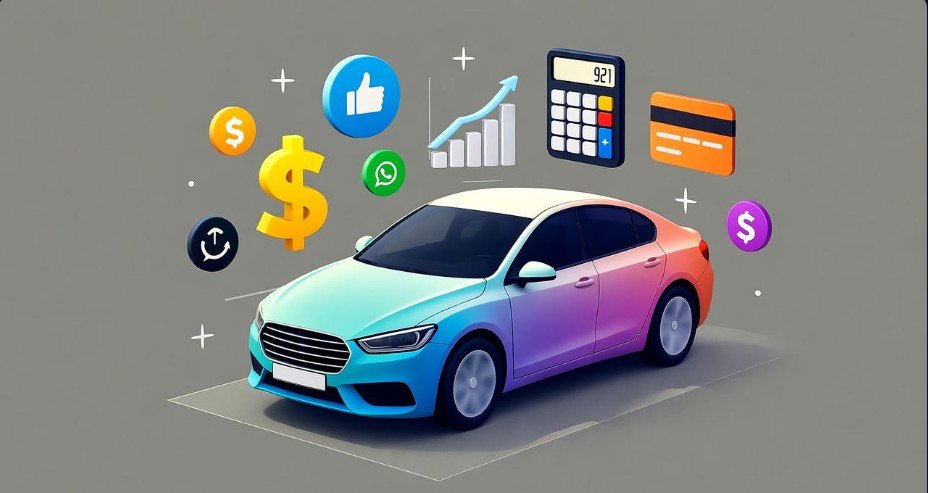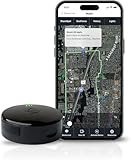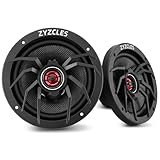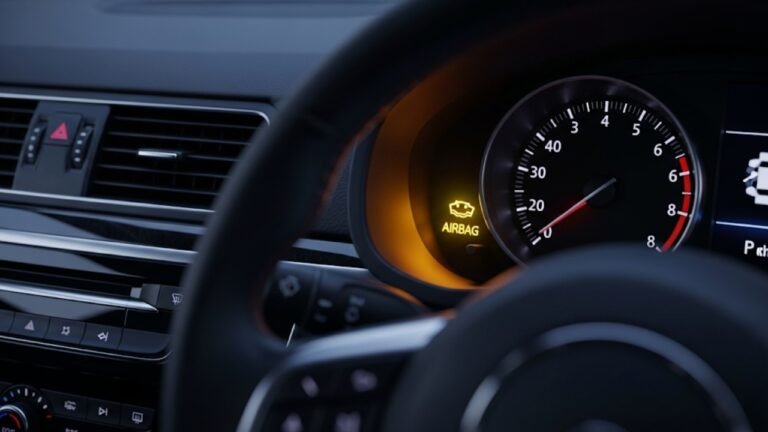How to Buy a Car With No Money: Ultimate Guide to Scoring a Free Ride

Imagine cruising down the road in your own car—music playing, windows down, the freedom of movement finally yours. Now imagine doing that without spending a single dollar upfront. Sounds impossible, right? But here’s the truth—buying a car with no money isn’t a fantasy. It’s absolutely possible if you know where to look and how to navigate the process.
Whether you’re low on funds, saving for something else, or simply trying to avoid a large down payment, there are creative and practical ways to get a car with no money. From zero-down financing options to government programs, from car giveaways to barter opportunities, this guide breaks it all down for you—step by step.
By the end of this article, you’ll know exactly how to drive off in your own vehicle, even if your wallet feels a little too light right now.
Understanding the Concept of Buying a Car With No Money

When people hear “buying a car with no money,” they often picture a free giveaway. While that can happen, the phrase generally means acquiring a car without an upfront payment. It’s more about smart financial strategies than pure luck.
There are several practical routes you can take:
-
Zero-down payment loans offered by certain lenders.
-
Car leasing arrangements that eliminate or minimize upfront costs.
-
Special financing programs for people with limited funds or low credit scores.
-
Community or non-profit car donation programs for those truly in need.
Each option has pros and cons, but the key idea remains: with a bit of research and preparation, you can get behind the wheel without shelling out cash immediately. The trick is understanding how these programs work—and how to use them to your advantage.
1. Exploring Different Ways to Acquire a Free Car
Let’s start with the most exciting part—getting a car completely free. While it may not happen overnight, there are real opportunities that can make it possible. The idea is to tap into programs, contests, or organizations that give away vehicles to people who qualify or get lucky.
Here are some legitimate ways you can do that:
A. Winning Car Contests and Sweepstakes
Many companies host car giveaways as part of marketing campaigns. You might find them at auto expos, radio contests, or online promotions. Entering such contests usually involves filling out forms, subscribing to newsletters, or completing small tasks like sharing a post or watching a video.
To increase your chances:
-
Follow car brands and local dealerships on social media.
-
Subscribe to legitimate sweepstakes websites.
-
Enter regularly but avoid scams that ask for payment upfront.
It’s a numbers game, but people really do win cars this way every year. It’s free to try—and the reward can be life-changing.
B. Joining Car Giveaway Programs
If luck isn’t your style, car giveaway programs can be a more reliable option. Non-profit organizations and charitable groups often run initiatives that provide vehicles to families, single parents, or individuals facing financial hardship.
You usually need to meet certain criteria, such as:
-
Having a verifiable need for transportation.
-
Demonstrating financial difficulty.
-
Submitting proof of income or references.
Once approved, these programs can connect you to a donated car, often fully serviced and road-ready. It’s not a luxury car, but it’s a start—and for someone rebuilding their life, that’s priceless.
C. Seeking Out Car Donation Programs
Car donation programs are designed to help those in genuine need. Here’s how they work: people donate old but functioning cars to charities, and these organizations pass them on to deserving individuals.
To find one near you:
-
Search online for local car donation charities.
-
Contact churches or community organizations.
-
Check programs like “Wheels for Work” or “1-800-Charity Cars.”
These vehicles may not be brand new, but they can give you independence, job access, and stability—all without spending a penny.
2. Leveraging Government Assistance Programs
If you don’t qualify for a giveaway or donation, there’s still hope. Government programs can help people with limited income or tough financial situations get access to vehicles affordably—or even free.
Let’s look at a few key programs that can make a difference:
A. Low-Income Car Ownership Programs
These are special initiatives designed to help low-income families purchase vehicles. Government agencies often partner with non-profits to offer low-interest or zero-down car loans, reduced-price used cars, or even free vehicles in some cases.
Here’s what you should do:
-
Visit your local Department of Social Services or municipal office.
-
Ask about low-income transportation programs.
-
Be prepared to provide documentation about your financial situation.
These programs recognize that transportation is essential for employment and stability. So if you’re struggling, you may be exactly who they’re designed to help.
B. Understanding Government Subsidies and Grants
Some regional governments offer subsidies or grants to help citizens with transportation needs—especially in rural areas. These funds may cover part of a vehicle’s cost, reduce your loan amount, or help pay for insurance and registration fees.
For example, in certain areas:
-
Work-to-ride grants help unemployed individuals buy a car to access jobs.
-
Environmental car subsidies support those buying fuel-efficient or electric vehicles.
It’s worth checking with local transportation or labor departments to see if such programs exist near you.
C. Using Public Transportation Subsidies to Save Up
This one’s more indirect but still powerful. If you currently rely on buses, trains, or carpooling, check if your city offers public transportation subsidies. These discounts can save you hundreds of dollars a year.
Instead of spending that money on daily commutes, start a car savings fund. Within months, you might have enough to cover insurance, registration, or even make a small down payment if needed.
3. Exploring Alternative Options for Getting a Free Car
Sometimes, the best approach isn’t traditional at all. If you’re resourceful and creative, you can find alternative paths to vehicle ownership that don’t involve cash or loans. Let’s look at some of these unique strategies.
A. Negotiating Car Sharing Agreements
Car sharing is an excellent solution if you only need a car occasionally. You and one or more people share ownership and expenses.
To make this work smoothly:
-
Find reliable partners—family, friends, or neighbors.
-
Decide who uses the car and when.
-
Split fuel, maintenance, and insurance costs fairly.
-
Write a simple agreement to avoid misunderstandings.
This approach lets you use a car regularly without paying the full cost, saving thousands every year.
B. Bartering or Exchanging Services for a Car
Money isn’t the only currency that matters. If you have skills—like web design, home repair, or tutoring—you can trade your services for a vehicle.
For instance:
-
A mechanic might give you a car in exchange for helping with marketing.
-
A neighbor might gift their old car if you help with renovation work.
It’s all about identifying your value and offering something meaningful in return. Bartering isn’t just creative—it’s also an empowering way to prove that effort can replace money.
C. Partnering With Non-Profits That Provide Free Vehicles
Many non-profit organizations assist people by providing free or low-cost vehicles. Some focus on veterans, single parents, or those recovering from hardships.
Here’s how to get started:
-
Research charities like “Cars4Heroes,” “OnlineCarDonation.org,” or “Good News Garage.”
-
Check their eligibility rules.
-
Submit a clear, honest application describing your need.
If approved, you’ll receive a vehicle that’s often checked and repaired before delivery. It’s a great way to restart your life without financial stress.
4. Financing a Car Without Upfront Money
Now, what if you can’t get a free car—but still need one immediately? The next best option is buying a car through smart financing that doesn’t require upfront payment.
Here’s how to make it work for you:
A. Zero-Down Payment Auto Loans
Some dealerships and lenders offer zero-down auto loans, especially for buyers with good credit. Essentially, you take the car home today and start making monthly payments next month.
Before you sign:
-
Compare loan terms from multiple lenders.
-
Check the total interest rate—not just the monthly cost.
-
Make sure there are no hidden fees or penalties.
It’s a great way to get a car fast, but you need to budget carefully to ensure you can keep up with the payments.
B. Car Leasing With No Down Payment
Leasing can also be a game changer. In many cases, you can lease a car without paying a large down payment, especially during promotional events.
Here’s why leasing might work for you:
-
Lower monthly payments than traditional loans.
-
Warranty coverage that reduces repair costs.
-
Option to buy the car at the end of the lease.
Leasing is perfect for those who prefer short-term flexibility or can’t afford a big initial expense.
C. Finding Buy-Here-Pay-Here Dealerships
If you have low credit or no credit history, buy-here-pay-here dealerships can help. They handle financing directly through the dealership—no banks involved.
Just remember:
-
Read the fine print carefully.
-
Don’t agree to unrealistic payment schedules.
-
Choose a reputable dealer with good reviews.
When used wisely, this option can help you build credit while getting the car you need right now.
5. Important Considerations Before Getting a Car With No Money
Before you jump into any offer or program promising a “free car,” take a step back. Excitement is natural—but so is caution. Buying a car with no money can be a smart move, but it also requires careful research, patience, and awareness of potential pitfalls.
Let’s go through some essential things you need to consider before making any final decisions.
A. Research the Source Thoroughly
Not every free car or zero-down loan is what it seems. Some deals hide high interest rates, expensive insurance requirements, or processing fees that defeat the purpose.
Here’s what you should do:
-
Verify the credibility of the seller, lender, or program.
-
Read online reviews and complaints.
-
Ask for all terms and conditions in writing.
When something sounds too good to be true, it often is. A genuine no-money-down car deal will always be transparent about costs, credit checks, and repayment terms.
B. Know the True Cost of Ownership
Even if you get a free or zero-down car, there are ongoing costs: gas, insurance, maintenance, and registration fees. Think ahead. Can you afford these recurring expenses?
Consider this quick breakdown:
| Expense Type | Average Monthly Cost (USD) |
|---|---|
| Fuel | $120 – $200 |
| Insurance | $100 – $180 |
| Maintenance | $40 – $80 |
| Registration/Taxes | $20 – $50 |
Even without a down payment, a car isn’t truly “free.” Be prepared to manage these costs responsibly so your new ride doesn’t turn into a financial burden.
C. Check Your Credit Score and Improve It
If you’re opting for a zero-down loan, your credit score matters—a lot. A higher score can unlock lower interest rates, better deals, and more approval options.
Here’s how to improve it quickly:
-
Pay bills and credit cards on time.
-
Keep credit card balances below 30% of the limit.
-
Avoid applying for too many loans at once.
Even improving your score by 50 points can make a noticeable difference in your car financing terms.
6. Understanding Legal and Financial Responsibilities
Once you acquire a car—free, financed, or donated—you must understand the legal and financial responsibilities that come with it. Owning a car is a privilege, but it’s also a legal contract between you, the government, and the road.
A. Transfer of Ownership
When you receive a donated or gifted car, ensure the ownership transfer is completed correctly. Ask the giver to sign over the title and make sure it’s officially registered in your name.
If you skip this step, you could face future liabilities like parking tickets, toll violations, or unpaid insurance tied to the previous owner.
B. Vehicle Registration and Taxes
Every state or region has its own registration rules. Even for free cars, you may need to pay small registration or inspection fees. These are usually one-time costs but are essential for legality and road safety.
Keep a checklist ready:
-
Title transfer documents.
-
Bill of sale or donation letter.
-
Proof of insurance.
-
ID and proof of residence.
C. Insurance Requirements
Driving without insurance is illegal in most regions. Even a free car must be insured before you hit the road. Fortunately, there are low-cost insurance plans designed for first-time owners or low-income drivers.
Pro tip: Ask insurers about usage-based insurance. These plans track your driving habits and offer lower premiums if you drive safely or infrequently.
7. Maintaining and Insuring a Free or Zero-Down Car
Getting a car with no money is only half the journey—keeping it running affordably is the other half. Maintenance and insurance are key to long-term savings and reliability.
A. Routine Maintenance on a Budget
You don’t need a mechanic for every little issue. Here’s how to save:
-
Learn basic car maintenance like oil changes and tire checks.
-
Use discount coupons or community repair workshops.
-
Check online platforms for affordable used parts.
Preventive maintenance not only keeps your car running longer but also avoids costly breakdowns later. Think of it as giving your car regular “health check-ups.”
B. Finding Affordable Insurance
Insurance can be one of the biggest ongoing costs. To save:
-
Compare quotes from multiple providers.
-
Ask about student, safe driver, or low-mileage discounts.
-
Bundle your car insurance with renter’s or homeowner’s insurance for extra savings.
Even a difference of $10 a month can add up to over $100 in annual savings.
C. Keep Records and Build Trust
Maintain a file for your car: service receipts, insurance papers, and title documents. If you ever need to sell or refinance, these records make your car more credible and valuable.
8. Creative Mindsets: Thinking Beyond Money
Sometimes, the key to getting a car isn’t about money—it’s about mindset and resourcefulness. Many people give up because they think cars are beyond their financial reach, but creativity often beats capital.
Consider these examples:
-
Offer to become a rideshare driver with someone else’s car under a profit-sharing agreement.
-
Volunteer for a non-profit that provides vehicles to staff members after a certain period of service.
-
Partner with delivery companies that let you lease vehicles with earnings deducted gradually.
When you start viewing opportunities differently, the road to ownership opens up in unexpected ways.
9. Common Mistakes to Avoid When Buying a Car With No Money
When your goal is to get a car without spending, mistakes can cost you more than money—they can waste time, hurt your credit, or even lead to scams.
Here are some traps to avoid:
-
Falling for online scams: Never pay “processing” fees for giveaway cars.
-
Ignoring hidden costs: Zero-down loans may have high interest or balloon payments.
-
Skipping inspections: Even a free car needs a mechanic’s check before you drive it.
-
Neglecting paperwork: Without proper documentation, you don’t legally own the car.
Be cautious, ask questions, and never rush into a deal out of desperation.
10. FAQs About How to Buy a Car With No Money
Q1: Can you really buy a car with no money?
Yes! You can either find zero-down financing, lease deals, or even free car donation programs that help you get a vehicle without paying upfront.
Q2: How can I get approved for a car loan if I have no down payment?
Focus on improving your credit score, provide proof of stable income, and consider co-signers. Many lenders approve no-money-down loans for borrowers with good payment histories.
Q3: What credit score is needed for zero-down financing?
Usually, a credit score of 660 or higher improves your chances. However, some lenders work with lower scores if you have a steady job or past loan experience.
Q4: Can I get a car for free from a non-profit?
Yes. Organizations like Cars4Heroes or 1-800-Charity Cars often donate vehicles to people who demonstrate financial hardship or community service involvement.
Q5: What’s better—leasing or buying with no money down?
Leasing can be more affordable short-term, while buying helps you build ownership equity. Choose based on your long-term goals and budget.
Q6: Are there risks in getting a free car?
Yes, some free cars may need repairs or have registration issues. Always inspect and verify ownership before accepting any vehicle.
Q7: How do I maintain a free or donated car affordably?
Keep up with oil changes, check tire pressure regularly, and learn basic DIY maintenance. This helps extend your car’s life and avoid costly repairs.
Conclusion: Turning Dreams Into Driveways
So, can you really buy a car with no money? Absolutely. The road might be unconventional, but it’s real—and many have traveled it successfully. Whether it’s a government subsidy, a non-profit donation, a zero-down loan, or even a car-sharing deal, your path to ownership doesn’t have to begin with a big bank account.
The secret lies in research, creativity, and persistence. Stay alert for programs, nurture your credit, and don’t shy away from thinking outside the box. Your dream of driving isn’t defined by your wallet—it’s driven by your willingness to explore every possible option.
With a bit of determination, you can soon find yourself gripping the steering wheel of your own car, proof that sometimes, opportunity—not money—is what gets you moving forward.




